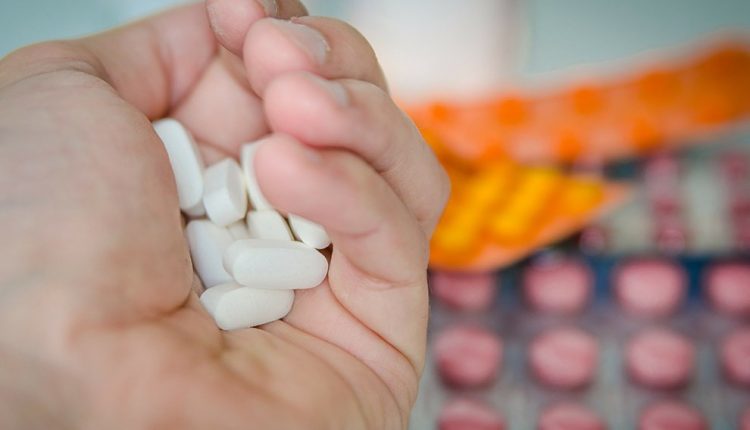
Gastrointestinal disorders caused by NSAIDs: what they are, what problems they cause
They eliminate pain and lower fever. In reality, however, NSAIDs can also damage the gastric mucosa through two mechanisms
Every day, millions of people around the world need to eliminate pain or reduce fever, and to do so they take what are known as non-steroidal anti-inflammatory drugs (NSAIDs)
Unfortunately, the main therapeutic activity of each drug is accompanied by side effects, some of which are undesirable side reactions.
Gastrointestinal disorders caused by NSAIDs, ranging from dyspepsia to peptic ulcer complications, are probably the most frequent drug side effects.
The risk of acid pathology related to the use of NSAIDs seems to be related to the dose of the drug and is higher in subjects who have been taking NSAIDs for less than a month or who are simultaneously taking several NSAIDs or corticosteroids.
The elderly, who are the main users of NSAIDs, are also particularly at risk, probably due to a reduced metabolisation of the drugs, to a greater vulnerability of the mucosa due to senile atrophy and to prolonged contact between NSAIDs and gastric mucosa due to delayed gastric emptying.
During the intake of NSAIDs, dyspeptic disorders occur in up to 60% of cases, 20% of which show no alteration on endoscopic examination.
Risk factors for the development of gastroduodenal ulcers secondary to NSAID intake are considered:
- Advanced age (>60 years)
- History of digestive pathology
- Concomitant therapy with anticoagulants
- Concomitant therapy with corticosteroids
- Severe associated diseases (e.g. cardiovascular disease, rheumatoid arthritis)
- Use of high doses or more than one NSAID at the same time.
NSAIDs can damage the gastro-duodenal mucosa by two main mechanisms
A direct local effect, which obviously only occurs after oral intake of the drug, and a systemic effect, secondary to absorption of the drug.
Side effects can be local or systemic; to the first group belong:
- Intracellular diffusion;
- Direct damage to mucus and surface phospholipids;
- Direct inhibition of HCO3 production and blood flow;
Systemic effects include:
- Inhibition of cyclooxygenase with reduced PG synthesis;
- Indirect alteration of mucus secretion, HCO3 and blood flow;
- Hyperproduction of lipoxygenase derivatives.
The direct toxic effect is due to the liposolubility of the NSAIDs, which allows them to diffuse freely through cell membranes into the mucous cells
This leads to altered cell permeability with backscattering of hydrogen ions from the lumen and consequent damage to the mucosa.
In addition, direct contact between NSAIDs and the mucosa also leads to a weakening of the defensive factors of the mucosa (reduction of mucus and bicarbonate secretion and blood flow).
The indirect effect occurs through the inhibition of an enzyme, cyclooxygenase, which is responsible for the synthesis of prostaglandins.
Prostaglandins are substances with a local action, which stimulate mucus and bicarbonate production in the gastroduodenal tract and increase local blood flow, thus having a protective effect on mucous cells (cytoprotection).
In addition, inhibition of cyclooxygenase causes an increase in the activity of another enzyme, lipoxygenase, with a consequent increase in other substances with a local effect, the leukotrienes, which exert damaging effects on the gastric mucosa.
NSAIDs gastroduodenopathy, symptoms
This form of gastroduodenopathy may be completely asymptomatic or present with dyspepsia, pain and/or burning in the epigastric area, the development of peptic ulcer complications such as digestive haemorrhage (which if massive has a mortality of about 10%), stenosis of the lumen and perforation of the gastric or more frequently the duodenal wall.
Chronic occult bleeding is not uncommon, and can lead to sideropenic anaemia.
It is controversial whether the intake of these drugs leads to increased gastro-oesophageal reflux and/or symptoms of reflux disease.
It is a common perception among clinicians that the use of non-steroidal anti-inflammatory drugs worsens the lesions of gastro-oesophageal reflux disease, but clinical studies confirming this are lacking.
Examinations and diagnosis
The main investigation to diagnose gastroduodenal disease related to the use of non-steroidal anti-inflammatory drugs is endoscopic examination.
In the case of mild symptoms, the diagnosis can also be made ex adiuvantibus, by observing the resolution of symptoms after discontinuation of NSAIDs and taking antacids.
What to do
In patients with gastroduodenal lesions from non-steroidal anti-inflammatory drugs who discontinue anti-inflammatory treatment, therapy with H2 antagonists or proton pump inhibitors has similar efficacy as in patients with erosions or ulcers not caused by NSAIDs.
It is not yet established whether treating a possible Helicobacter Pylori infection reduces the occurrence of gastroduodenal complications from taking non-steroidal anti-inflammatory drugs.
Taking NSAIDs, some advice
The main preventive measure is to avoid overuse, overdosing and taking several NSAIDs at the same time.
Very recently a scientific study has finally demonstrated the effectiveness of pharmacological prevention (with drugs blocking gastric secretion) of gastroduodenal lesions caused by chronic use of NSAIDs.
Other therapeutic aids that may be useful in preventing NSAID lesions are antacids, mucosal protectors and prostaglandin synthetase analogues.
Preventive treatment is mandatory in patients who take NSAIDs and have more than one of the risk factors.
Recently, much interest has been aroused by the introduction of new anti-inflammatory drugs that partially block cyclooxygenase.
There are two isoforms of cyclooxygenase: COX-1 and COX-2. COX-1 is the one that produces substances (prostaglandins) that protect cells.
COX-2, on the other hand, is induced in inflammatory cells and is therefore important in the process of inflammation and pain.
Therefore the use of drugs that selectively block COX-2 should reduce the incidence of gastro-duodenal lesions.
Read Also:
Emergency Live Even More…Live: Download The New Free App Of Your Newspaper For IOS And Android
Drug Allergies: What Are The Symptoms And How Are They Diagnosed?
Peptic Ulcer: The Differences Between Gastric Ulcer And Duodenal Ulcer
Overview Of Gastritis: What It Is, How To Treat It



